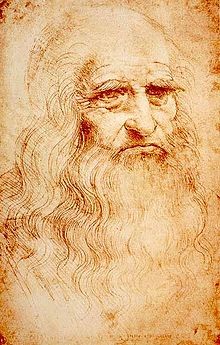-
(b.) -1452 April 15(d.)1519 May 02
Bio/Description
He was an Italian polymath, regarded as the epitome of the "Renaissance Man", displaying skills in numerous diverse areas of study. While most famous for his paintings such as the Mona Lisa and the Last Supper, Leonardo is also renowned as a scientist, engineer and inventor. The areas of his scientific study included aeronautics, anatomy, astronomy, botany, cartography, civil engineering, chemistry, geology, geometry, hydrodynamics, mathematics, mechanical engineering, optics, physics, pyrotechnics and zoology. During the Renaissance, the study of Art and Science was not perceived as mutually exclusive; on the contrary, the one was seen as informing upon the other. Although his training was primarily as an artist, it was largely through his scientific approach to the art of painting, and his development of a style that coupled his scientific knowledge with his unique ability to render what he saw that created the outstanding masterpieces of art for which he is famous. As a scientist, he had no formal education in Latin and mathematics and did not attend a university. Because of these factors, his scientific studies were largely ignored by other scholars. Leonardo's approach to science was one of intense observation and detailed recording, his tools of investigation being almost exclusively his eyes. His journals give insight into his investigative processes. A recent and exhaustive analysis of him as a scientist by Frtijof Capra argues that Leonardo was a fundamentally different kind of scientist from Galileo, Newton and other scientists who followed him. His experimentation followed clear scientific method approaches, and his theorizing and hypothesizing integrated the arts and particularly painting; these, and Leonardo's unique integrated, holistic views of science make him a forerunner of modern systems theory and complexity schools of thought. He was a master of mechanical principles. He utilized leverage and cantilevering, pulleys, cranks, gears, including angle gears and rack and pinion gears; parallel linkage, momentum, centripetal force and the aerofoil. It is impossible to say with any certainty how many or even which of his inventions passed into general and practical use, and thereby had impact over the lives of many people. Among those inventions that are credited with passing into general practical use are the strut bridge, the automated bobbin winder, the machine for testing the tensile strength of wire and the lens-grinding machine the hand rotation of the grinding wheel operates an angle-gear, which rotates a shaft, turning a geared dish in which sits the glass or crystal to be ground. A single action rotates both surfaces at a fixed speed ratio determined by the gear.
-
Date of Birth:
1452 April 15 -
Date of Death:
1519 May 02 -
Gender:
Male -
Noted For:
Among other conceptualizations, he designed a calculator -
Category of Achievement:
-
More Info:


